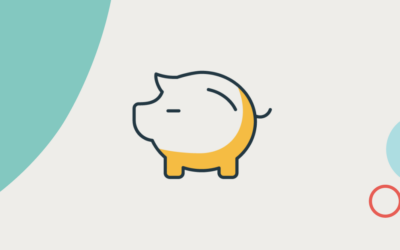So you’ve taken the plunge into freelancing. At this point, you’ve likely done loads of work to launch your business and convince yourself that you can, indeed, do this!
It takes a lot of courage to put yourself out there and chart your own path. Once you’ve decided to freelance, your focus shifts to the biggest and scariest question: How do I get clients so I can pay my bills?!?
When you’re first starting out, you may be tempted to take anything and everything that comes your way. But you can set yourself up for success by thinking through exactly what type of client you want and how to engage them up-front.
In this post, we’re going to share our pro tips on how to land your first client.
A lot of freelancers will tell you to “niche down”.
Step 1: Figure out who you’re going after and what you’re selling.
You probably have a general sense of what you want to offer and who would be interested in it. Still, it’s important to spend time thinking through your ideal client. This isn’t just a manifestation practice (although, we’re all about that life).
A lot of freelancers will tell you to “niche down”—in other words, find a specialty early and really lean into it. What’s the logic? Well, setting yourself apart from your peers and charging what you’re worth can be tough, especially if your industry is saturated or you’re offering generalized services. A great way to stand out is by speaking to a very specific need. You can do this in many ways: narrowing down your offerings, focusing on a geographic region, or catering to a specific industry or company type.
At our boutique marketing consultancy, Interimly, we niched down by specializing in short-term engagements for early-stage, B2B SaaS companies. Most of them were in the process of building out their internal teams, and they needed a mix of strategy and execution. We acted as the bridge from one stage to the next, helping them gain momentum as they entered a new phase of growth. Our offerings were actually generic—we would help with SEO, paid programs, email marketing, operations, and more—but the types of companies we worked for were very specific, and that helped us a lot.
When you have a sense of who you want to cater to, it’s a lot easier to package your services, because you know what that audience needs. For many freelancers, this process is reversed: you know what you want to offer, and then you figure out who wants it. It works both ways. As long as you’re taking the time to identify a specific need and then fill it, you’re doing great.
Nurture your network!
Step 2: Get in front of your target audience.
Once you’ve identified your ideal client, don’t be afraid to reach out to your network and contact list to get the word out. Letting your family, friends, and community know what you’re up to can create ripples that eventually nudge people your way. The more people you take the initiative to talk to, the more likely you generate new business!
We know this can be scary, especially if you aren’t super comfortable with self-promotion. But talking yourself up a bit is a good thing! And it gets a lot easier the more you do it. Social media is a great starting place to connect with people and share what you’re working on. Try posting on your personal accounts, and even asking friends to share! Nurture your network!
You’d be surprised how many freelancers run their business on referrals from friends, family, and other freelancers. Spend time forming connections in your field, especially with freelancers who offer complementary services to yours. Who knows? They might get a lead who’s not for them, but is for you—and if they know what you’re offering, they could send that business your way. Some freelancers, like Kat Boogaard, even share interesting gigs in their field via their newsletter and social media. Tune in!
If you’re having trouble landing clients through your contacts and social media, you can try exploring sites like Fiverr, Upwork, Freelancer, PeoplePerHour, 99designs (for designers), or Credo (for digital marketers). These sites are marketplaces for freelancers and clients to connect. Also, some freelancer communities like WorkFrom offer job boards where people can post about gigs and advertise their own services. Ask around to see what other sites and communities people in your field are using to land new clients.
![]()
Step 3: Sell the value of your services.
After you put in some work to market your services and reach potential clients, we hope you’ll get bites quickly. If you start chatting with a prospect over Instagram or someone responds on a marketplace, make sure to be responsive, confident, and clear. This is the moment to sell your value.
It’s easy to jump straight into the details, explaining your tactics, sharing your pricing, and discussing the nitty-gritty. And all of that is essential, yes. But in early talks with a prospect, it’s super important to focus on the true value of your services.
How do you do that? Talk to them first about the outcomes you can help them achieve, so they can see all the value you bring to the table. Paint a picture of how the work you do will meet their needs. This is a great moment to reference work you’ve done at previous jobs or for other clients (if you have them!). It gets their wheels turning, imagining all the awesome work you’ll do for them too.
Once you’ve sold them on your value – you can discuss the nitty gritty details of how you work and your pricing.
At this stage you should be able to qualify a client and make sure the work you are offering will meet their needs and vice versa.
![]()
Step 4: Get that proposal and contract signed!
If the early conversations with a prospect go well and they’re interested in moving forward, make sure you set expectations for next steps. (Well, the first step is to perform a touchdown dance as soon as you’re off the call—you don’t need to mention that part.) Let them know when you’ll follow up with a proposal and give them a general sense of what that will include. Then, go forth and close that deal.
Our recommendation: Get a proposal created and follow up promptly so you can make a great impression and keep the ball rolling. We know this part of operating a business can be confusing. So when you’re ready to lock in your client, we suggest checking out our article on proposals and contracts. It breaks down all the basics, explaining what these documents are and how you can use them effectively.



